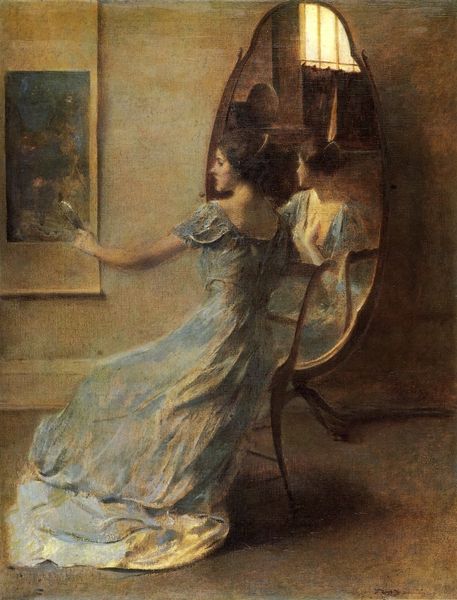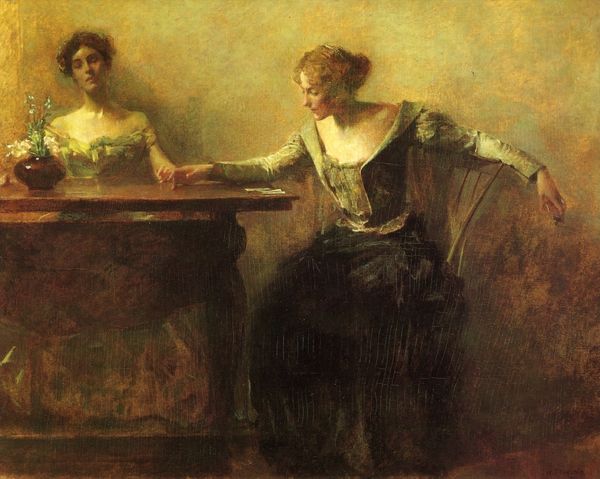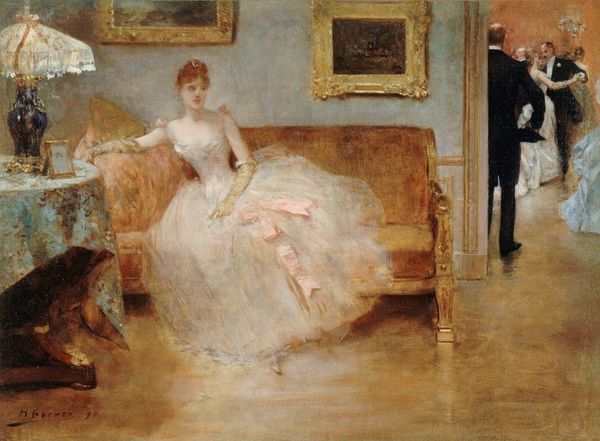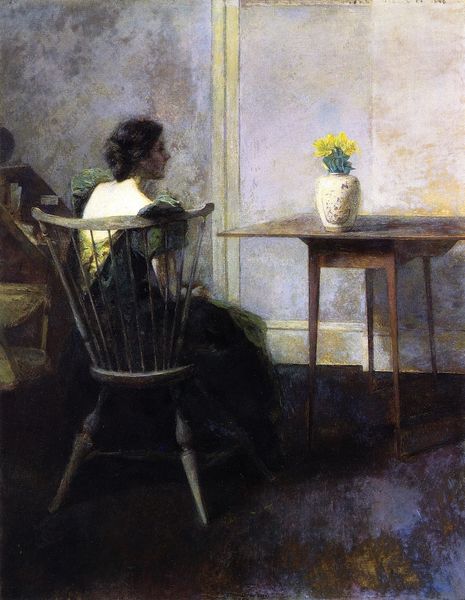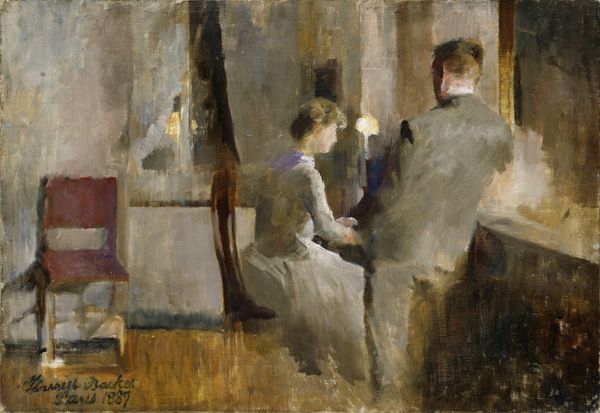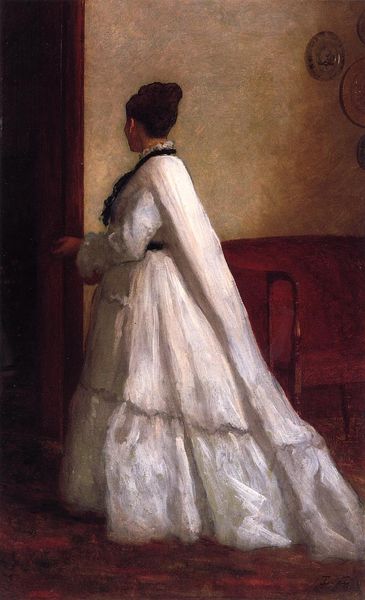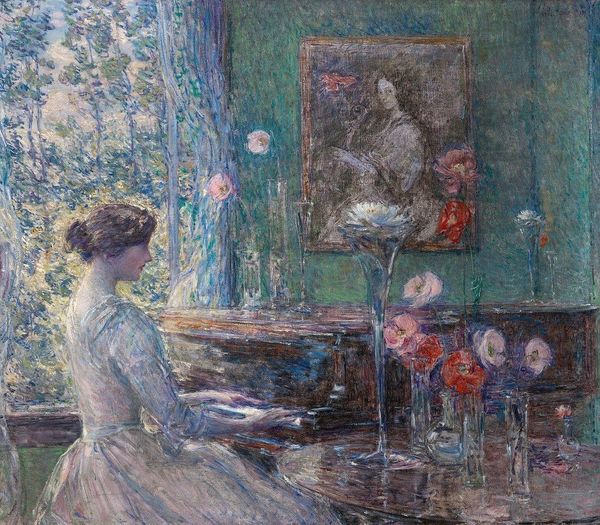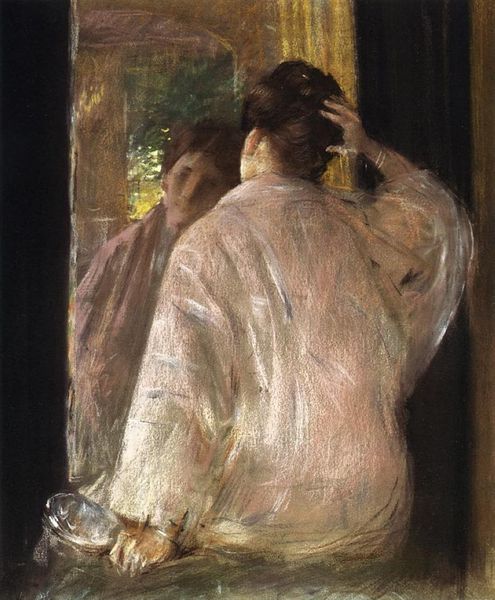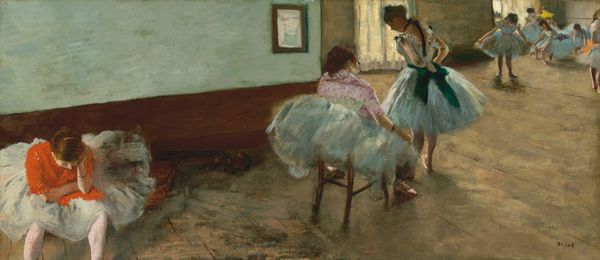
Copyright: Public Domain: Artvee
Curator: Thomas Wilmer Dewing painted "The White Dress" around 1901. What are your initial thoughts on this work? Editor: It evokes a sense of quiet detachment. The composition feels meticulously balanced, almost symmetrically so, yet the hazy, soft-focus style imparts a certain dreamlike quality, preventing any sense of rigid formality. The palette is constrained, almost monochromatic, emphasizing subtle tonal variations. Curator: That subdued palette resonates with the themes common in Dewing’s work—introspection, memory, the elusive nature of feminine beauty. The woman in the white dress appears almost spectral, perhaps representing an idealized version of womanhood or a fleeting moment captured in time. Notice how her pose is passive; she seems to float through the space, connecting the present to a different emotional place. Editor: Indeed, that spectral quality you mentioned is fascinating. Structurally, the positioning of the figure in white creates a focal point but, equally, her diffused appearance serves to de-emphasize individuality. This seems at odds, formally. Are we meant to view her as a specific individual, or more as an abstraction of some kind? Her attire is echoed by architectural verticality which dissolves into tonal blocks, establishing planes that advance and recede ambiguously. Curator: The dress itself acts as a significant symbol, purity being a commonly associated idea but it could also symbolize a rite of passage, innocence, or even a foreshadowing of the spiritual journey from this life to another. Her quiet introspection becomes monumental against the banality of a typical domestic scene. Editor: The application of the paint also contributes to the ambiguity. Dewing uses loose, visible brushstrokes that dissolve forms, suggesting impermanence. I'd argue that his style serves the function of elevating atmosphere over clarity. Consider his orchestration of tone—variations upon a muted chromatic range render tangible forms elusive and ill-defined. This pushes formal values towards symbolic expression in itself, a union of design and semiotic communication. Curator: Ultimately, "The White Dress" embodies that turn-of-the-century sensibility towards emotional understatement and visual poetry, leaving viewers to reflect on themes of beauty, time, and the transient nature of existence. Editor: An elegant construction, indeed, that rewards considered looking. One must yield to the tonal relations within to appreciate its totality.
Comments
No comments
Be the first to comment and join the conversation on the ultimate creative platform.


